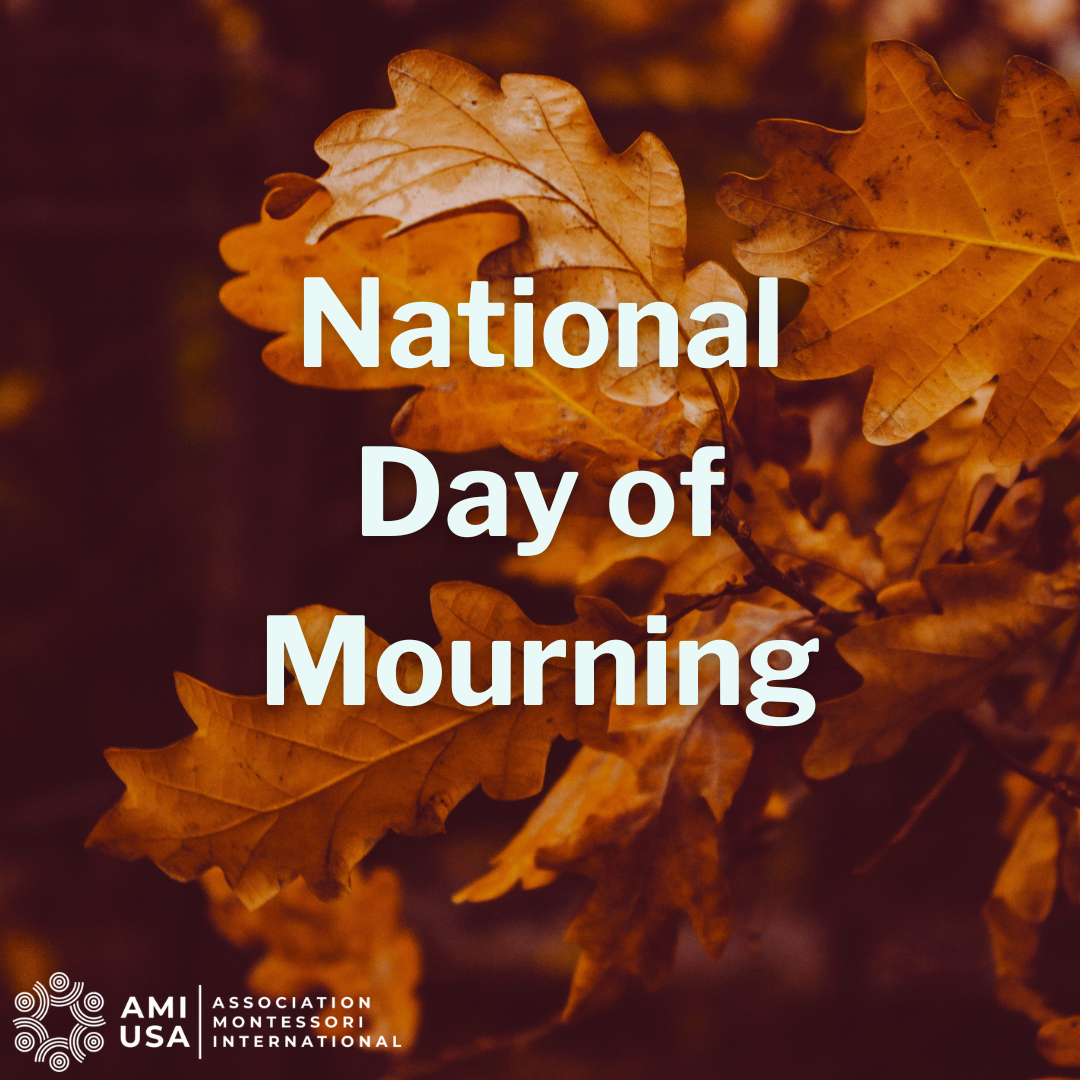Gratitude for The National Day of Mourning


Gratitude for The National Day of Mourning
By: Siobhan Growing Elm Brown, Mashpee Wampanoag
As a member of the Mashpee Wampanoag Tribe, my elders taught me that to be Wampanoag is to live in a state of gratitude. To me, walking in gratitude means acknowledging the gifts of Creator; the natural world, my family and community, our homelands, our language, and our children.
This time of year is my favorite in the natural world. The photosynthesis, the vibrant colors, the crisp and cool air, which leads us in the Northeast to warm sweaters and hot apple pie. It can also be a challenging time for Indigenous people, particularly for Eastern Woodlands tribes. While we welcome opportunities to share our culture with the world and to educate others of our history with accuracy often missing from the curriculum, we are also confronted with the calls and inquiries that increase during this time. If you are part of an organization that only calls on Indigenous presenters in November, we invite you to interrogate this practice. Indigenous History is History. Indigenous people are also present in the here and now with a vibrant culture and way of living on this land; all of the Americas are Indigenous lands. The history of this land is often overlooked and this couldn’t be more glaring than by the flurry of activity November brings. Again, while we welcome the opportunity to represent our culture, we also remember the importance of living in gratitude.
There was this same flurry of activity in the fall of 1970. Wamsutta Frank James, an Aquinnah Wampanoag tribal member, was invited to speak at a prestigious event in Massachusetts to commemorate the 350th anniversary honoring the arrival of the Mayflower on the shores of Wampanoag Land. Several days prior to the gala, James obliged a request to review the speech and was notified a few days later that he would not be allowed to give it. The message was deemed “inflammatory” and “out of place” at the celebratory event. After refusing to give a speech that was written by the Commonwealth of Massachusetts event organizers, James, joined by hundreds of Native activists including Everett Tall Oak Weeden (Narragansett) and allies, gathered in Plymouth and observed the first National Day of Mourning.1
Every Thanksgiving day, since 1970, James’ speech has been delivered on Cole Hill in Plymouth. Native Americans gather, first with a spirit of gratitude and honor for the land, the ancestors, and the resilience of our voices despite the attempts to silence them. The day is recognized with ceremony, songs and a march. In addition to James’ speech, other messages are offered that represent the importance of centering Native American voices rather than silencing them in the name of perpetuating a myth.
“History wants us to believe that the Indian was a savage, illiterate, uncivilized animal. A history that was written by an organized, disciplined people, to expose us as an unorganized and undisciplined entity. Two distinctly different cultures met. One thought they must control life; the other believed life was to be enjoyed, because nature decreed it. Let us remember, the Indian is and was just as human as the white man. The Indian feels pain, gets hurt, and becomes defensive, has dreams, bears tragedy and failure, suffers from loneliness, needs to cry as well as laugh. He, too, is often misunderstood.”2 – Wamsutta Frank James
As we move toward a place of understanding, it is important to recognize how unlimited this opportunity really is. Just two years after the establishment of the Day of Mourning, the Association of Montessori Internationale in the US was founded in 1972. Montessori education began a presence in this country that continues today with leadership representing more of the demographic spectrum of our community. AMI/USA seeks to uplift and not silence marginalized voices.
The space for Native American people, culture, and our voices remain unlimited. To that end, I walk in gratitude for Wamsutta Frank James, Everett Tall Oak Weeden and many other activists for starting The National Day of Mourning. I walk in gratitude for the Wôpanâak Language Reclamation Project for opening the first Wôpanâak language and culture school for our children that employs a Montessori pedagogy. I walk in gratitude for my elders: Frank and Alice Hicks, Arnise Patricia Brown, jessie little doe baird, Paula Peters, Ramona Peters, Anita Mother Bear Peters, Marlene Lopez, Linda Coombs and our Sôtyum (chief) Vernon Silent Drum Lopez.
I walk in gratitude for the work that was done and will continue to be done so that Wampanoag voices are centered throughout the year, contributing to the truth of our identity in the here and now and for generations to come.
Resources
https://www.cnn.com/2019/11/24/us/native-americans-national-day-of-mourning
Mention
While it is AMI/USA’s practice to capitalize descriptors with regard to race, we have centered a small portion of Wamsutta Frank James’ speech in its original form.
1 http://www.uaine.org/background.htm
2 http://www.uaine.org/suppressed_speech.htm
